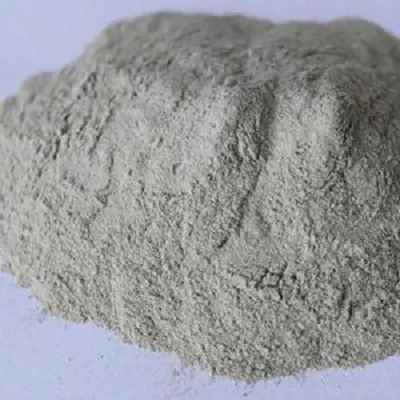In most standard water treatment systems, there is a flocculation process that is used to reduce the concentrations of solids within the effluent stream. This particular process makes use of substances that aid in the clumping together of suspended particles.
There are several different substances that have been used for decades, but research continues looking for more. Ideally, newer flocculants would be more effective, but also more environmentally friendly. With such goals in mind, Genesis Water Technologies, Inc. has developed this new flocculant treatment media.
ZeoTurb is a unique and advanced powder flocculation treatment designed for the clarification of water & wastewater treatment applications. This media acts as a powerful bio-organic flocculant which is both safe and effective for both municipal and industrial applications.
This innovative powder flocculant treatment media can be introduced manually into a clarifier and agitated using a hand paddle for low energy application requirements.
It can also be introduced using a dry powder dispensing system autonomously into a clarifier tank or system and agitated using a low speed mixer for approximately 5-10 minutes.
About Coagulation and Flocculation Treatment
Coagulation and flocculation are two of the most important and common treatment processes in water treatment systems. They are involved in pre treatment prior to sedimentation, which is where a majority of the solid/liquid separation occurs in preparation for the subsequent processes like filtration.
These processes are often used synonymously because they are often used conjointly and are generally similar, but are not quite the same. Coagulation is a process that uses a charged coagulant aid to nullify the opposite charge that exists between the suspended particles within the water or wastewater solution.
Before adding the coagulant via chemicals or via electrocoagulation, the charge between the particles repels them from one another. This makes settling more difficult and slow, but afterwards, when the charge is neutralized, these particles can begin to agglomerate.
However, this can still take some time in a clarifier, therefore, to speed things along a flocculant aid is introduced and the solution is gently agitated. The flocculant makes the already coalescing particles more attracted to one another and the agitation causes the clumps to collide more proactively. The larger these clumps become, the faster they will fall out of suspension in the sedimentation/clarification stage.
In this case, ZeoTurb acts as a flocculant media. Thanks to individual properties of the primary components of ZeoTurb, it makes for a very effective flocculant treatment aid.
Why does ZeoTurb make for a good flocculant?
What it boils down to is the properties of its constituents. One reason, its physical and chemical properties have demonstrated efficiency in reducing turbidity, sediment, and trace heavy metal levels. For another, unlike many other synthetic flocculants, both are purely natural and eco-friendly materials.
Its constituents have excellent adsorbent and caution exchange capabilities. Polymers are well known in water treatment for their binding capabilities. This powder media has an affinity for heavy metals, similar to zeolite, so it compounds the adsorption of heavy metal ions, suspended solids, and turbidity. It environmental friendly composition keeps the formed agglomerations stable and together even in the presence of shear forces. It can also be used in clarification applications before membrane systems with post filtration.
What issues can it solve?
- Silt/Sediment
- Algae
- Turbidity
- Ammonia
- Trace Hydrocarbon
- Certain Heavy Metals
- Tannins/Color
Clients that can benefit from using Zeoturb flocculant treatment media
- Government Agencies/Municipalities
- Petroleum related industries
- Food & Beverage
- Power Generation
- Textile
- Pulp & Paper
- Commercial/Industrial

Leave a Reply